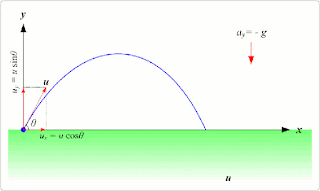Interactive Guide to Kinematics
What is Kinematics?
Kinematics is the branch of classical mechanics that describes the motion of points, objects, and systems of bodies without considering the forces that cause them to move. It focuses on trajectories, velocities, and accelerations—essentially the geometry of motion.
Applications of Kinematics
- Engineering: Designing vehicles, machinery, and mechanical systems
- Robotics: Programming robot movements and trajectories
- Animation: Creating realistic character and object movements
- Sports Science: Analyzing athlete performance and technique
- Astronomy: Predicting planetary and celestial body motions
Examples of Kinematics in Daily Life
1. Projectile Motion
When you throw a ball, it follows a parabolic trajectory due to gravity acting on it while it moves forward.
2. Circular Motion
A car turning on a curved road experiences centripetal acceleration to maintain its circular path.
3. Relative Motion
When you walk forward on a moving train, your speed relative to the ground is the sum of your walking speed and the train's speed.
Advantages and Disadvantages
Advantages of Kinematics
- Provides fundamental understanding of motion
- Essential for engineering and design
- Forms basis for more complex physics concepts
- Has wide applications across many fields
- Relatively simple mathematical treatment
Limitations of Kinematics
- Doesn't explain why objects move (needs dynamics)
- Assumes idealized conditions (no friction, perfect shapes)
- Complex motions can require advanced mathematics
- Relativistic effects not accounted for at high velocities
How Kinematics Works
- Identify the object whose motion you want to analyze.
- Establish a reference frame (coordinate system) for measurement.
- Measure the position of the object at different times.
- Calculate velocity as the change in position over time.
- Calculate acceleration as the change in velocity over time.
- Use kinematic equations to predict future motion based on current state.
Frequently Asked Questions
Kinematics describes motion without considering its causes, while dynamics studies the forces that cause motion. Kinematics answers "how does it move?" while dynamics answers "why does it move?"
The three fundamental kinematic equations for constant acceleration are: (1) v = u + at (final velocity), (2) s = ut + ½at² (displacement), and (3) v² = u² + 2as (velocity-displacement relation), where u is initial velocity, v is final velocity, a is acceleration, t is time, and s is displacement.
In robotics, kinematics is used to calculate joint angles and positions needed for end-effectors (like robot hands) to reach specific locations. Forward kinematics calculates position from joint angles, while inverse kinematics calculates required joint angles for a desired position.




